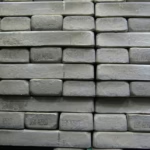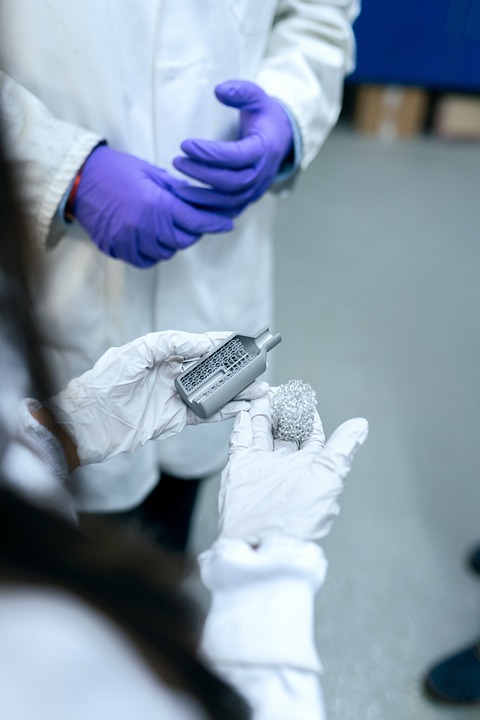Elements of Discovery: A Historical Perspective on Chemistry
Chemistry, the science of matter and its transformations, has a rich history that spans millennia. From ancient alchemical practices to the modern understanding of chemical elements and compounds, the journey of chemistry is marked by discovery, innovation, and the relentless pursuit of knowledge. This article explores the key historical milestones in the development of chemistry, the evolution of its concepts, and the notable figures whose contributions have shaped this vital field of science.
I. Ancient Beginnings
Alchemy: The Precursor to Chemistry
The roots of chemistry can be traced back to ancient civilizations where early forms of alchemy emerged. Alchemy was not merely a precursor to chemistry but a philosophical and spiritual discipline that encompassed the transformation of materials and the quest for the philosopher’s stone—a substance believed to turn base metals into gold and grant immortality.
The Egyptian Contributions
The earliest known alchemical practices were documented in ancient Egypt, where people utilized various metals and substances for both practical and mystical purposes. Texts such as the Emerald Tablet signify the fusion of alchemical principles with philosophical thought, emphasizing the interconnectedness of the material and spiritual worlds. The Egyptians were pioneers in metallurgy and mummification processes, which required knowledge of chemical reactions.
Greco-Roman Influence
The Greeks expanded upon these early alchemical ideas. Figures like Empedocles and Democritus introduced the concept of elements—earth, water, air, and fire—as fundamental components of nature. Aristotle later added a fifth element, aether, emphasizing the role of these substances in understanding the properties of matter. The amalgamation of alchemy and philosophy set the stage for later scientific inquiry.
The Middle Ages: A Fusion of Cultures
During the Middle Ages, alchemy flourished, particularly in the Islamic world. Scholars such as Jabir ibn Hayyan (Geber) made significant contributions. He is often regarded as the “father of chemistry,” introducing systematic experimentation and documentation of processes, laying the groundwork for the scientific method.
The Translation Movement
The translation of Greek and Arabic texts into Latin during the Renaissance played a pivotal role in the revival of alchemical knowledge in Europe. This cross-cultural exchange led to the refinement of chemical processes and the eventual transition into a more empirical approach to science.
II. The Birth of Modern Chemistry
The Scientific Revolution
The Renaissance marked a turning point in the history of chemistry. The emergence of the scientific method, as championed by figures like Galileo and Francis Bacon, shifted the focus from philosophical speculation to empirical observation and experimentation.
Robert Boyle and the Definition of Elements
One of the key figures in the transition to modern chemistry was Robert Boyle, whose work in the 17th century laid the foundation for the modern definition of an element. In his book The Sceptical Chymist (1661), Boyle challenged the traditional Aristotelian view of elements, arguing that they were not the four classical elements but rather pure substances that could not be broken down into simpler components. This idea fundamentally redefined the field and towards the end of the 17th century, Boyle’s law described the relationship between pressure and volume of gases, demonstrating a systematic approach to experimentation.
Lavoisier and the Birth of Chemical Nomenclature
Antoine Lavoisier is often referred to as the “father of modern chemistry.” He introduced the concept of conservation of mass and unambiguously defined elements as substances that could not be decomposed into simpler forms. Lavoisier’s work in the late 18th century led to the establishment of chemical nomenclature, creating a systematic way to name chemical substances based on their composition.
The Role of Oxygen
Lavoisier’s identification of oxygen as a key reactant in combustion was particularly revolutionary. This was part of his broader effort to discredit the phlogiston theory, which erroneously posited that a fire-like element called “phlogiston” was released during combustion. Lavoisier’s work not only clarified the role of oxygen in chemical reactions but also established a more rigorous approach to scientific inquiry.
III. The Age of Discovery: New Elements and the Periodic Table
Discovery of New Elements
The 19th century was marked by a surge in the discovery of new elements, a process heavily influenced by advances in experimental techniques and instrumentation. The invention of the voltaic pile by Alessandro Volta paved the way for electrochemistry, allowing chemists to isolate elements that were previously unidentifiable.
The Role of Chemists
Chemists like Dmitri Mendeleev and John Newlands were instrumental in classifying these elements. Newlands’ Law of Octaves established a periodic relationship between the elements based on their atomic weights, although it had limitations. Mendeleev’s more refined periodic table, published in 1869, organized the elements based on their chemical properties and predicted the existence of undiscovered elements.
Mendeleev’s Periodic Table
Mendeleev’s periodic table represented a watershed moment in chemistry. It showcased the periodic properties of the elements and provided a framework that not only categorized known elements but also guided future discoveries. His foresight in predicting properties of elements such as gallium and germanium before their actual discovery underscored the utility of the periodic table as a tool for understanding elemental relationships.
IV. The Rise of Modern Chemistry
The 20th Century: Chemical Advances and Innovations
As the 20th century unfolded, significant advancements in chemistry continued to emerge, often fueled by the demands of industrialization and technological progress.
Quantum Chemistry
The development of quantum mechanics profoundly changed our understanding of atomic and molecular structures. Chemists like Linus Pauling applied quantum theory to explain chemical bonding, leading to newfound insights into the properties of materials.
Organic Chemistry and the Role of Synthesis
The rise of organic chemistry in the 20th century saw the synthesis of complex molecules, revolutionizing pharmaceuticals, agricultural chemicals, and materials science. Key figures, such as chemist Robert H. Grubbs, contributed to advances in polymer and material science, paving the way for innovative applications in diverse fields.
Environmental Chemistry
The latter half of the 20th century and early 21st century witnessed the growth of environmental chemistry, focusing on the chemical processes occurring in the environment and the impact of human activity on ecosystems. Research on pollutants, greenhouse gases, and the implications of climate change have all required a deep understanding of chemical principles.
V. Looking Ahead: The Future of Chemistry
Interdisciplinary Approaches
As the boundaries of scientific disciplines continue to blur, chemistry stands at the intersection of biology, physics, and engineering. The rise of fields like biochemistry and materials science showcases the need for collaborative approaches to solve some of the world’s pressing challenges, such as renewable energy, healthcare, and environmental sustainability.
The Role of Artificial Intelligence
Artificial intelligence and machine learning are beginning to influence chemical research, from drug discovery to materials design. These technologies hold the potential to accelerate the discovery process, enabling chemists to sift through vast databases and synthesize new compounds more efficiently.
Conclusion
The journey of chemistry from ancient alchemy to modern science reflects humanity’s relentless quest for understanding the natural world. The significant milestones in the history of chemistry demonstrate how collaboration, innovation, and scientific rigor have collectively shaped this vital field. As we stand on the threshold of new discoveries, the elements of discovery continue to expand, promising an exciting future for chemistry and its impact on society.
Modern Footnote Sources
-
Boyle, Robert. “The Sceptical Chymist.” (1661). This work marked a transition from traditional alchemy to a more empirical approach that ultimately defined modern chemistry.
-
Lavoisier, Antoine. “Elements of Chemistry.” (1789). This book formalized chemical nomenclature and introduced the concept of conservation of mass.
-
Mendeleev, Dmitri. “Principles of Chemistry.” (1869). Mendeleev’s periodic table remains a foundational framework for understanding the relationships among chemical elements.
-
Pauling, Linus. “The Nature of the Chemical Bond.” (1939). This text introduced quantum mechanics to chemical bonding, significantly advancing our understanding of molecular structures.
-
Grubbs, Robert H. “Living Polymerization.” (2007). Recognition of Grubbs’ work in polymer chemistry showcases ongoing innovation in the field.
-
Environmental Protection Agency. “Basic Information about Contaminants.” This source outlines the role of chemistry in understanding environmental pollutants and their effects.
-
National Academy of Sciences. “Frontiers in Chemical Science.” This report discusses the future challenges and opportunities in the field of chemistry.
By understanding our past, we can appreciate the complexity and beauty of chemistry, guiding us toward a better future.


























Add Comment